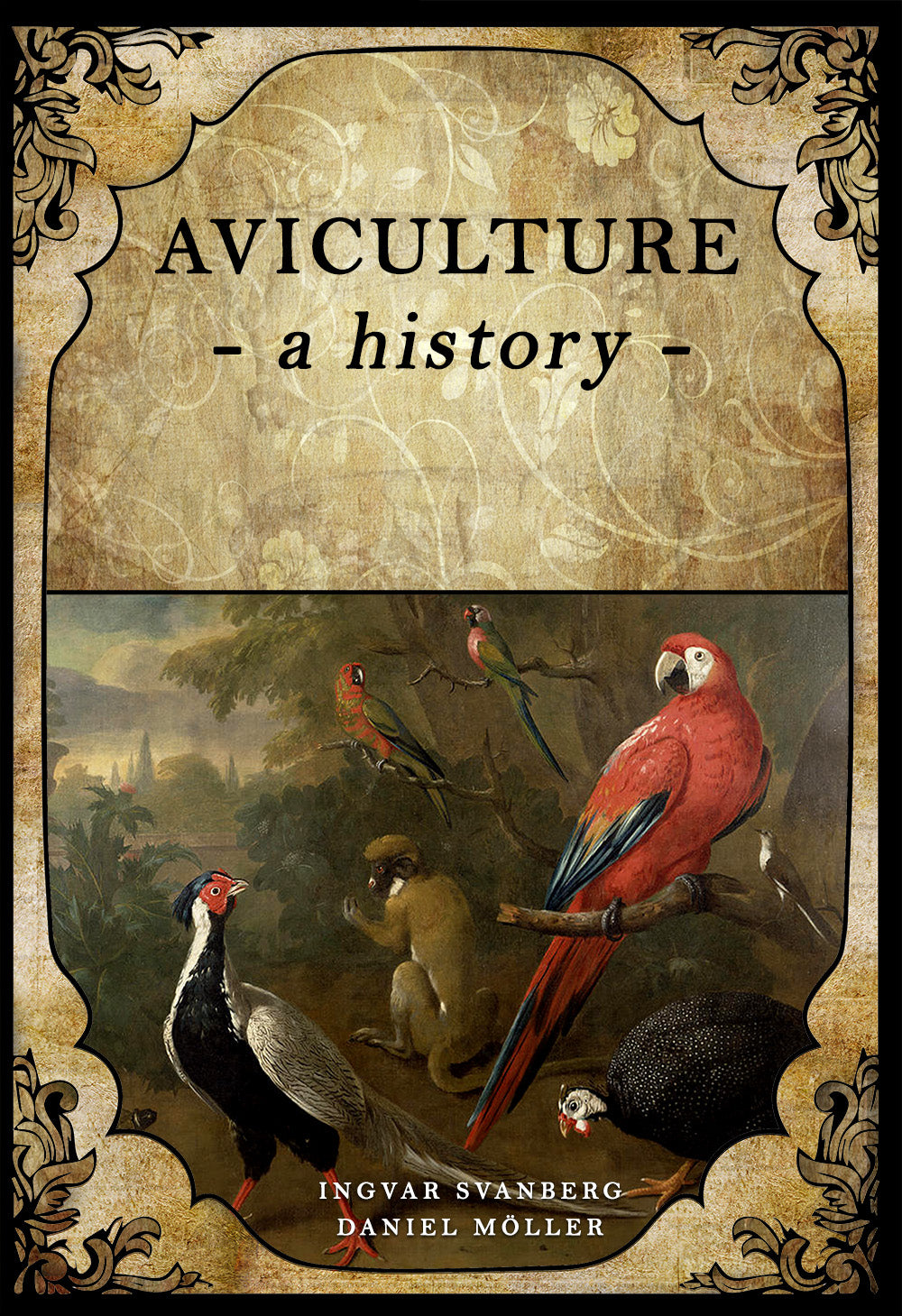

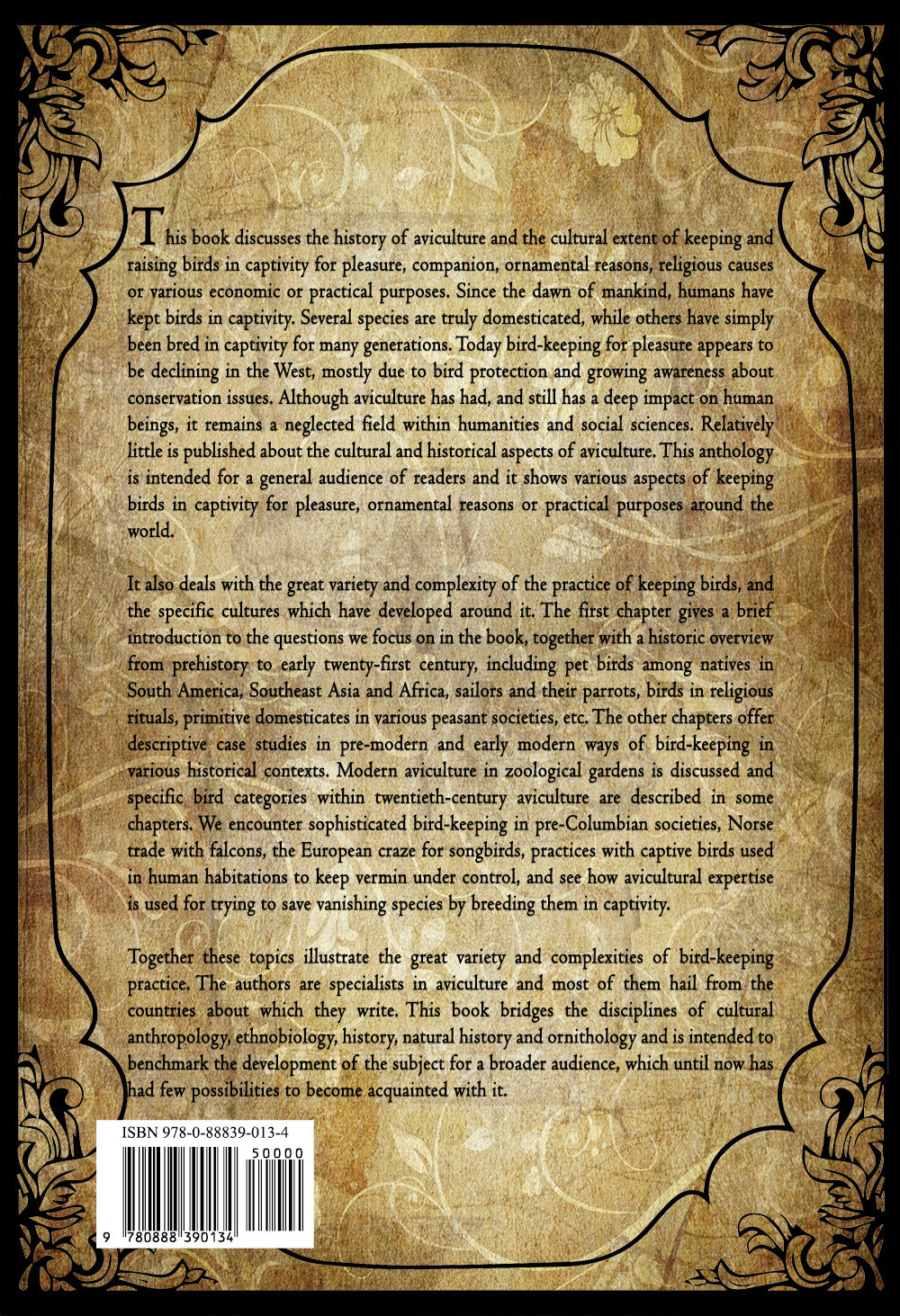
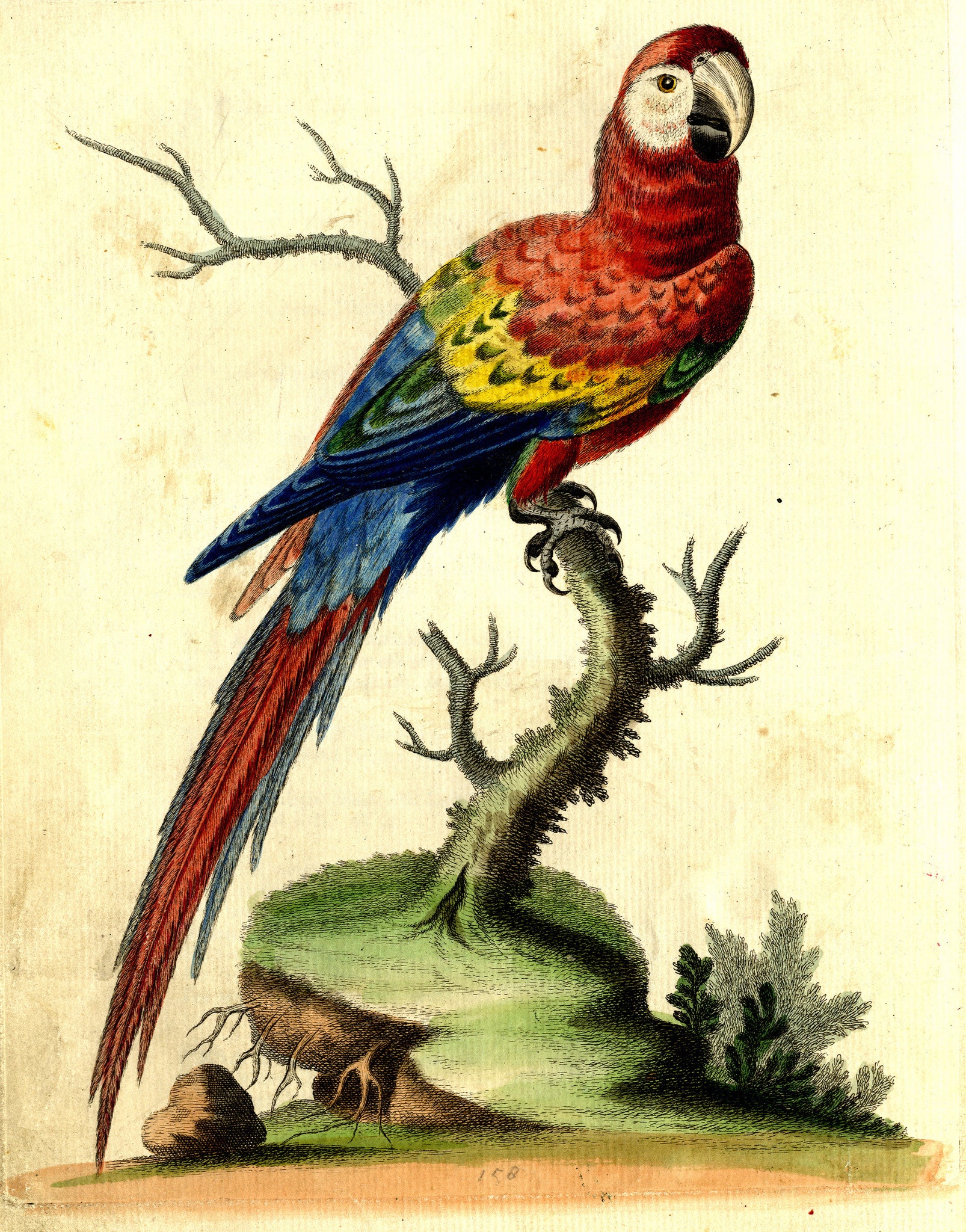

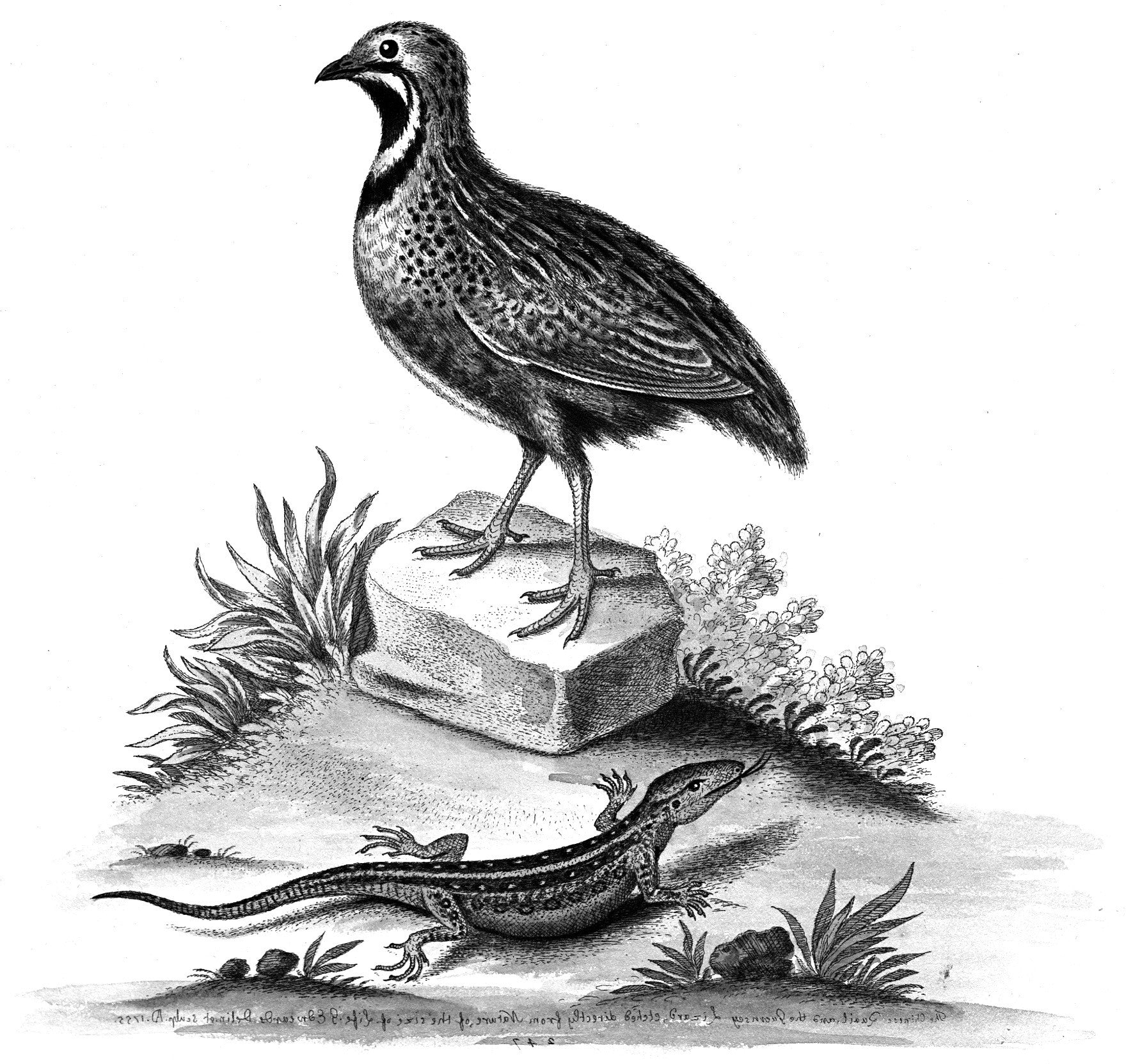
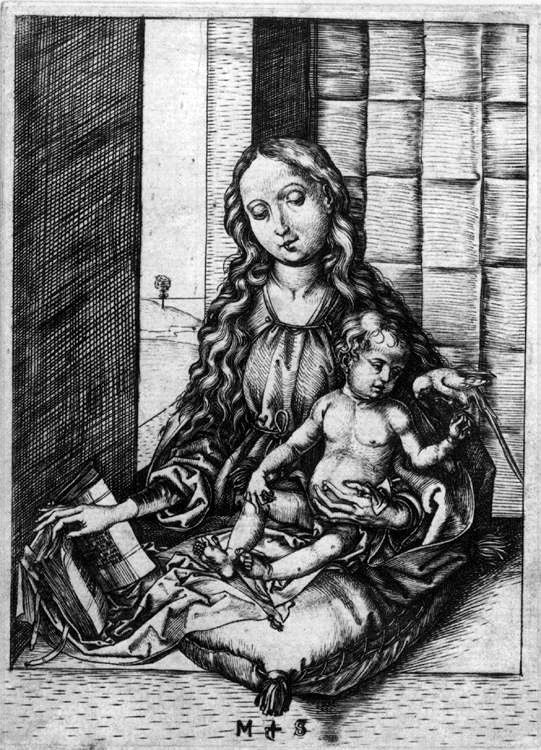
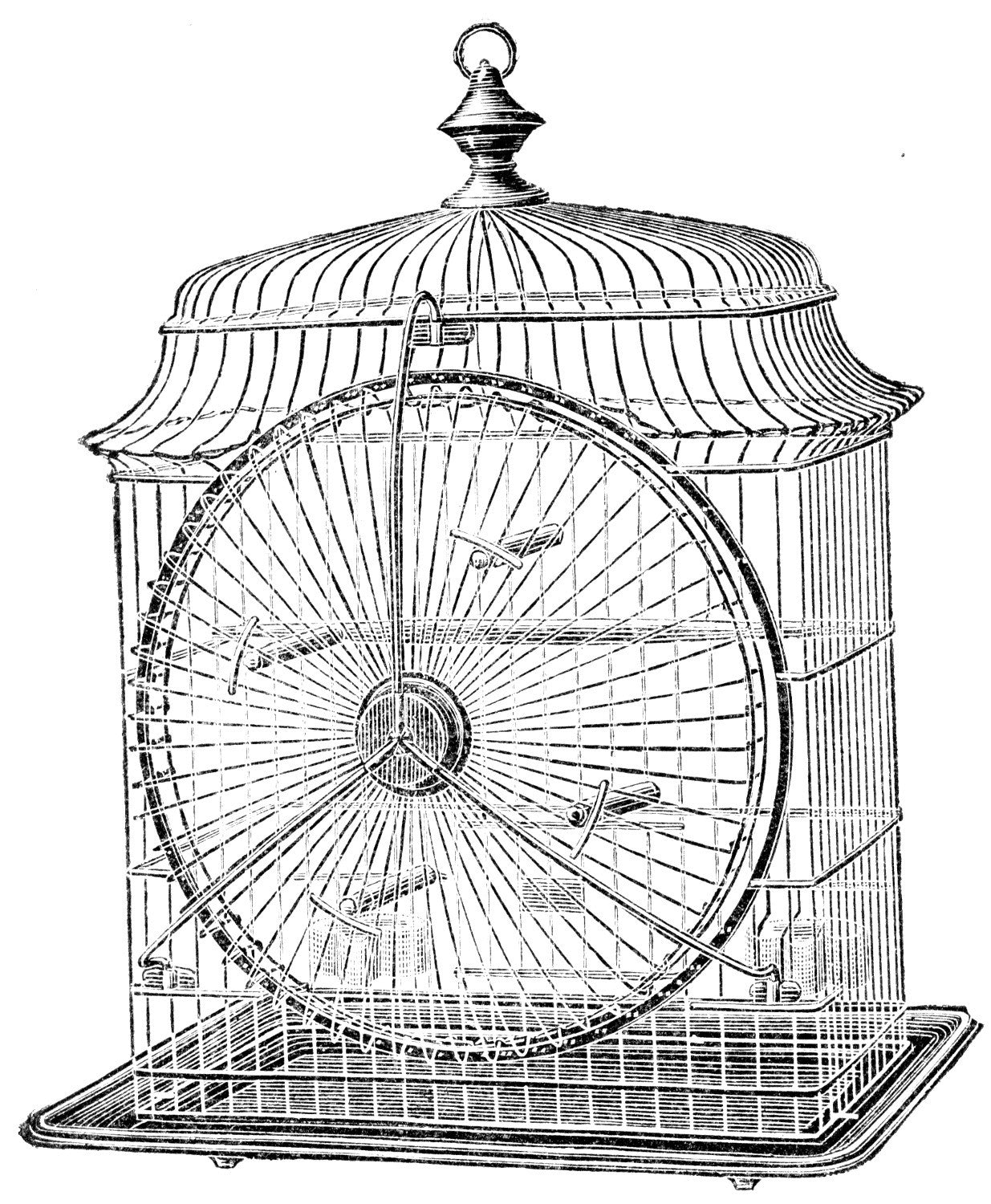
Aviculture: a history
Details
By: Svanberg, Ingvar & Moller, Daniel
ISBN-13: 978-0-88839-013-4 [Hardcover]
ISBN-13: 978-0-88839-153-7 [Softcover]
Binding: Hardcover/Softcover
Size: 11" X 8.5"
Pages: 268
Photos: n/a
Illustrations: 100
Publication Date: May 2018 (HC), Sept 2018 (SC)
Description
A comprehensive overview of the history of bird keeping across the world.
This book discusses the history of aviculture and the cultural extent of keeping and raising birds in captivity for pleasure, companion, ornamental reasons, religious causes or various economic or practical purposes. Since the dawn of mankind, humans have kept birds in captivity. Several species are truly domesticated, while others have simply been bred in captivity for many generations. Today bird-keeping for pleasure appears to be declining in the West, mostly due to bird protection and growing awareness about conservation issues. Although aviculture has had, and still has a deep impact on human beings, it remains a neglected field within humanities and social sciences. Relatively little is published about the cultural and historical aspects of aviculture. This anthology is intended for a general audience of readers and it shows various aspects of keeping birds in captivity for pleasure, ornamental reasons or practical purposes around the world.
It also deals with the great variety and complexity of the practice of keeping birds, and the specific cultures which have developed around it. The first chapter gives a brief introduction to the questions we focus on in the book, together with a historic overview from prehistory to early twenty-first century, including pet birds among natives in South America, Southeast Asia and Africa, sailors and their parrots, birds in religious rituals, primitive domesticates in various peasant societies, etc. The other chapters offer descriptive case studies in pre-modern and early modern ways of bird-keeping in various historical contexts. Modern aviculture in zoological gardens is discussed and specific bird categories within twentieth-century aviculture are described in some chapters. We encounter sophisticated bird-keeping in pre-Columbian societies, Norse trade with falcons, the European craze for songbirds, practices with captive birds used in human habitations to keep vermin under control, and how avicultural expertise is used for trying to save vanishing species by breeding them in captivity.
Together these topics illustrate the great variety and complexities of bird-keeping practice. The authors are specialists in aviculture and most of them hail from the countries about which they write. This book bridges the disciplines of cultural anthropology, ethnobiology, history, natural history and ornithology and is intended to benchmark the development of the subject for a broader audience, which until now has had few possibilities to become acquainted with it.
Author Biography
Ingvar Svanberg is a Swedish ethnobiologist at Uppsala University, and as a scholar specialized in human relationship with domestic animals, especially birds in captivity. He has published many books and scientific articles in international journals. He is also an editor of the Swedish avicultural journal Serinus.
Daniel Möller is an Associate Professor of Literature at Lund University in Sweden. Among his many books are Dumb Beasts in Hallowed Tombs: Swedish Funerary Poetry for Animals 1670-1760 (2015).
Book Reviews
The Auk: Ornithological Advances 136:268–2, © 2019 American Ornithological Society
Review by Jason J. Crean
2812 Edgewood Parkway, Woodridge, Illinois, USA
Finally, the science behind and history of aviculture gets the recognition it deserves. Birds have long dazzled us as a unique component of the natural world. Whether it be their mastery of flight, the occupation of and adaptation to every major ecosystem on Earth, their unparalleled songs, their flamboyant courtship displays, or the possession of an evolutionary masterpiece, the feather, humans have worshipped, sought, and highly prized this highly varied class of vertebrate animals. It was for these reasons, and assuredly others, that man began bringing these birds into the home to study, propagate and enjoy their elaborate behaviors, habits, and ornamentation.
The keeping of birds is a widely held, centuries-old tradition that involves methods as diverse as the creatures this book discusses. One of the many reasons for keeping birds was to capitalize on their uncanny evolutionary prowess, putting to use their finely developed abilities to enhance human cultural practices. This text includes many examples of how birds have improved human lives, such as the purpose of pest control, from the tamed wading birds of Finland that eliminated cockroach infestations to the Mexican roadrunners kept in homes to eliminate mice, snakes, and other undesirable visitors.
Yet another example, falconry, is an ancient tradition that is at least 4,000 years old and is still practiced today, and highlights the relationship that can exist between human and avian kind. This tome truly captures the many ways birds have enhanced human societies and have continued to pique our curiosity about the natural world.
Kisling, Jr. additionally highlights the extensive history of aviculture through his examination of parrot aviculture among New World societies, including the Incas who kept extensive collections of living specimens; this long-standing tradition extends to today where many of the peoples of Central and South America keep parrots as pets and also use their feathers in ceremonial ornaments. With certain parrot species being some of the most commonly kept pets in the world, it is of particular
interest that this practice has very deep roots.
Of particular significance is the extensively detailed account by Lindholm that details the evolution of aviculture in America, from the cross-Atlantic excitement surrounding the trade of the North American Northern Cardinal (Cardinalis cardinalis) to the increased propagation of bird species from around the world in private collections and zoos and the detailed history of the now extinct Carolina Parakeet
(Conuropsis carolinensis). Lindholm’s encyclopedic knowledge of avicultural history is second to one and provides a rare and fascinating context behind how birds are kept today in both private collections and zoological institutions.
To say that aviculture was and is practiced by many different types of people would be an understatement; Lindholm cites examples from royalty who managed elaborate aviaries with a wide variety of specimens to parrots that called the White House home. He goes on to detail trends like that of the former practice of keeping native U.S. birds and the laws that followed to protect them as well as the history of introducing non-native species such as the House Sparrow (Passer domesticus) and European Starling (Sturnus vulgaris) that can be found across the United States today. Also described is how aviculture has saved species from the brink of extinction.
From the propagation of the Bali Mynah (Leucopsar rothschildi), to the extraction of birds from islands like Guam and the Marianas, which had been overtaken by invasive predators, aviculture has truly been a revolution of the human spirit.
In additional entries, there continues to be something for every reader. A discussion on the domestication of 2 still commonly held bird species, the Bengalese Finch (Lonchura domestica) and the Java Sparrow (Padda oryzivora), details their origins, breeding practices, and popularity among aviculturists today. Other skillfully detailed chapters guide the reader through the trials and successes of other avicultural innovations like that of hummingbird breeding efforts and chaffinch singing competitions in Europe. The blending of human interest stories with the science of aviculture is due to delight a wide range of readers and shed light on our birdkeeping origins. A common theme emerges throughout this text that captures the true importance of aviculture throughout the ages.
The keeping and breeding of birds in a host of different cultures allowed for a closeness to nature and a deep appreciation for the creatures that inhabit the Earth.
These aviculturists, who even today continue to share their vast knowledge and experience with a great diversity of avian species, have added so much to our collective knowledge of the natural history of birds from around the world. This history of aviculture reinforces the work of today’s aviculturists, both the professional and the hobbyist, who are keeping countless species in existence to ensure a future with birds. This volume is a true triumph and should be included in the library of every bird enthusiast, zoo, museum, and university.